Yet another post composed in the wee hours of the morning. I don’t dare post this until I have time to review it under less sleep-deprived circumstances!
What I first need to do is retract my comment in the previous post about the male Yellow-rumped warbler being a passing visitor. Since that visit when I first photographed the bird (April 15) the warbler has visited at least twice more, both times in the early evening and coming to the smallest, least likely bird bath in a yard where there are lots of choices. So based on the times of the visits and the location where it prefers to bathe, I now think its more than a pass-through visitor. This is an absolutely BEAUTIFUL bird in full breeding plumage! Unfortunately, its visits usually occur in fading light and when we are otherwise occupied. I feel fortunate to have obtained photos of this early visitor when I did.
With the improved weather I’ve spent a lot of time in the yard without a lot to show for it in terms of photography. But I do have some observations to share with you. A pair of Black-capped chickadees were intent on moving into one of our bird houses and had spent time building a nest. A male House sparrow took a sudden interest in the activity and repeatedly flew to the bird house and inserted its head in the door. I ran off the sparrow several times on the same afternoon but the chickadees were apparently run off by the sparrow’s intrusion and have now abandoned the nest box.
One afternoon I was sitting in the yard watching the activity and an American robin hopped into view and then began intently viewing the ground with first one eye and then another. Even though this was a fairly compacted piece of ground the robin leaned down and extracted about a three-inch, chubby earth worm from the ground. I thought I was going to obtain photos of the bird eating the worm, but the robin continued on its way leaving the worm on top of the ground. My best explanation… “sport fishing”!
Now to the photos! On this same day (4/17/2020) I was startled by a raccoon entering the yard and accessing one of the bird baths only about fifteen feet away. It was certainly aware of me but took its time getting a drink, watching me intently the entire time. I was able to get about 12-15 photos from point blank range.
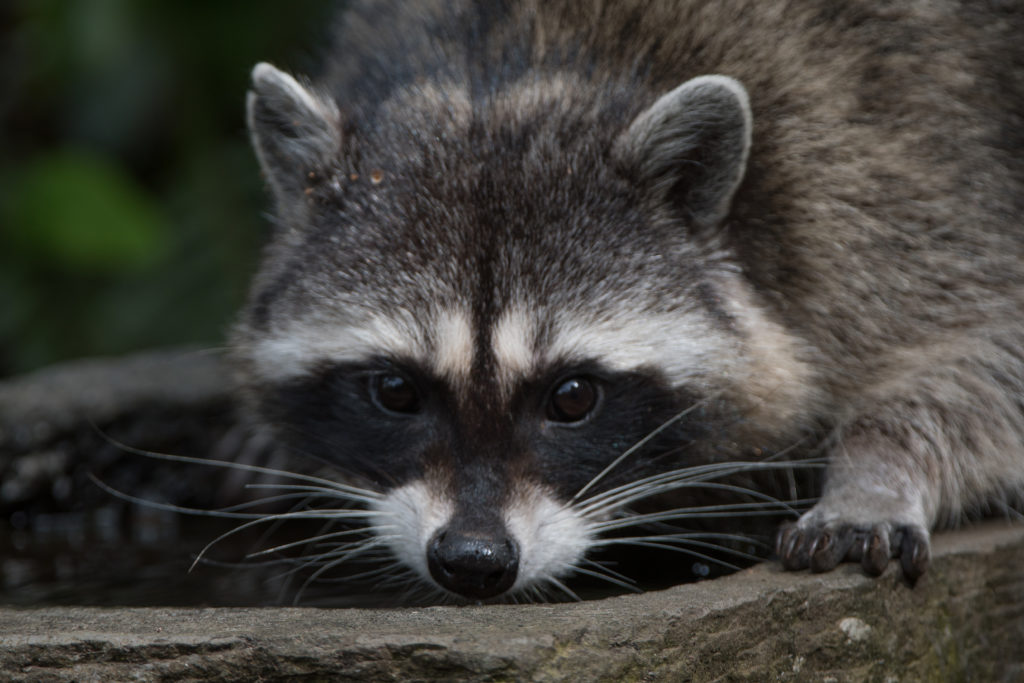
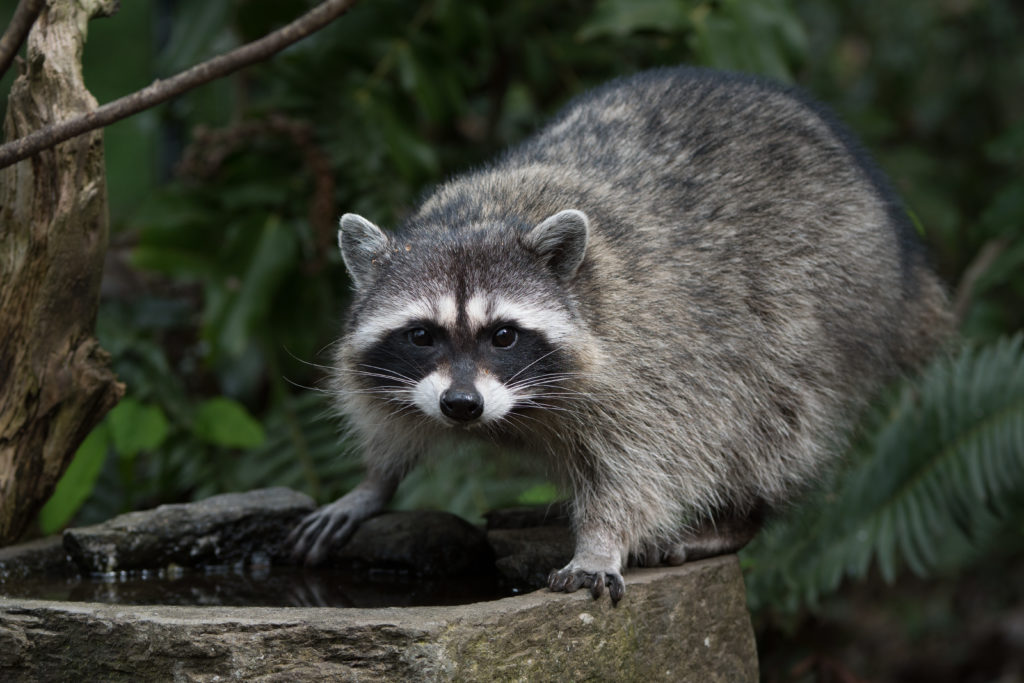
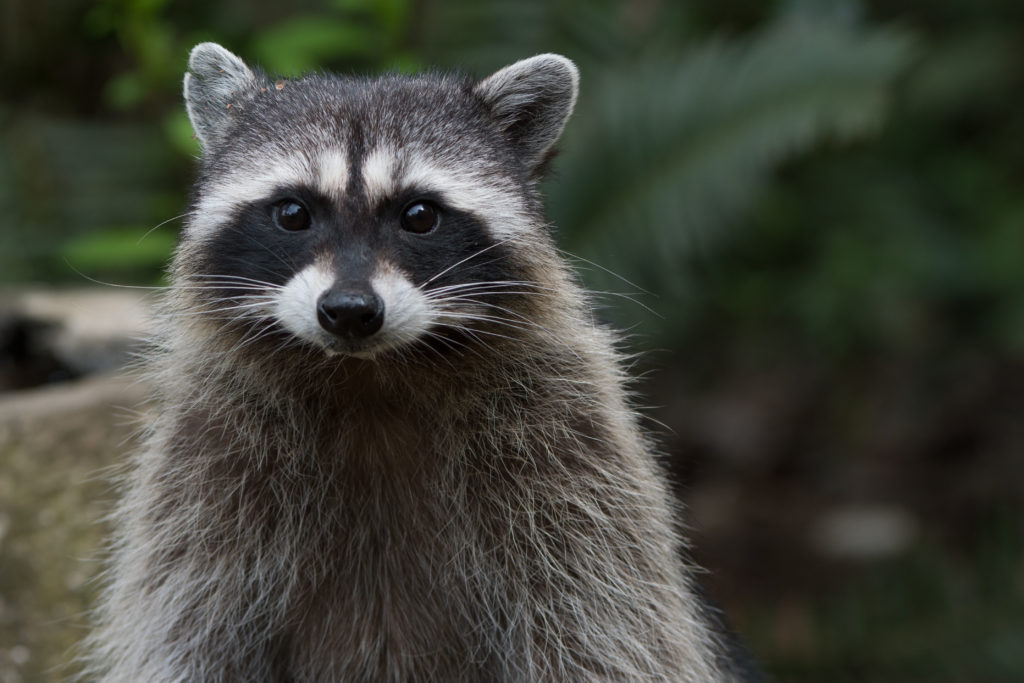
That same day I drove down to the Cap Sante Marina in the morning to investigate a neighbor’s sighting of peeps at the far northwest corner of the marina. There were about 15-20 Least sandpipers working the mud flats. I obtained an eerie photo of what appeared to be a single sandpiper but two refections of sandpipers in the water. It wasn’t until a couple of days later when I reexamined the photo in detail that I realized that the second reflection was from a bird higher on the bank. The second reflection was made possible only by perfectly calm water. Here’s the photo I puzzled over…
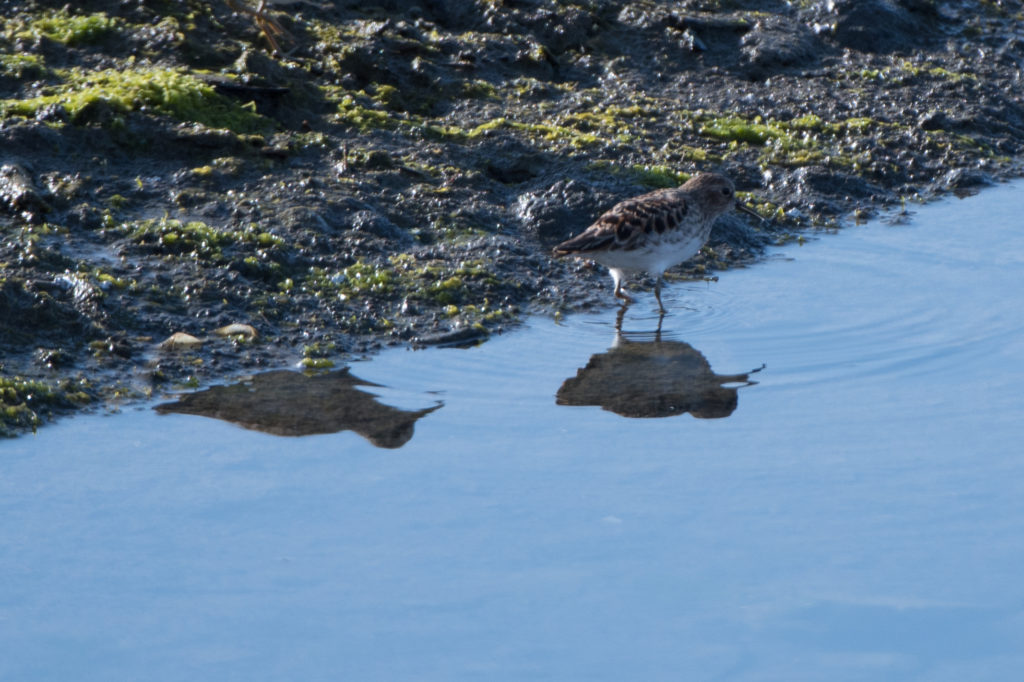
And… that same afternoon I obtained a nice photo of our male Rufous hummingbird hovering over the watercourse.
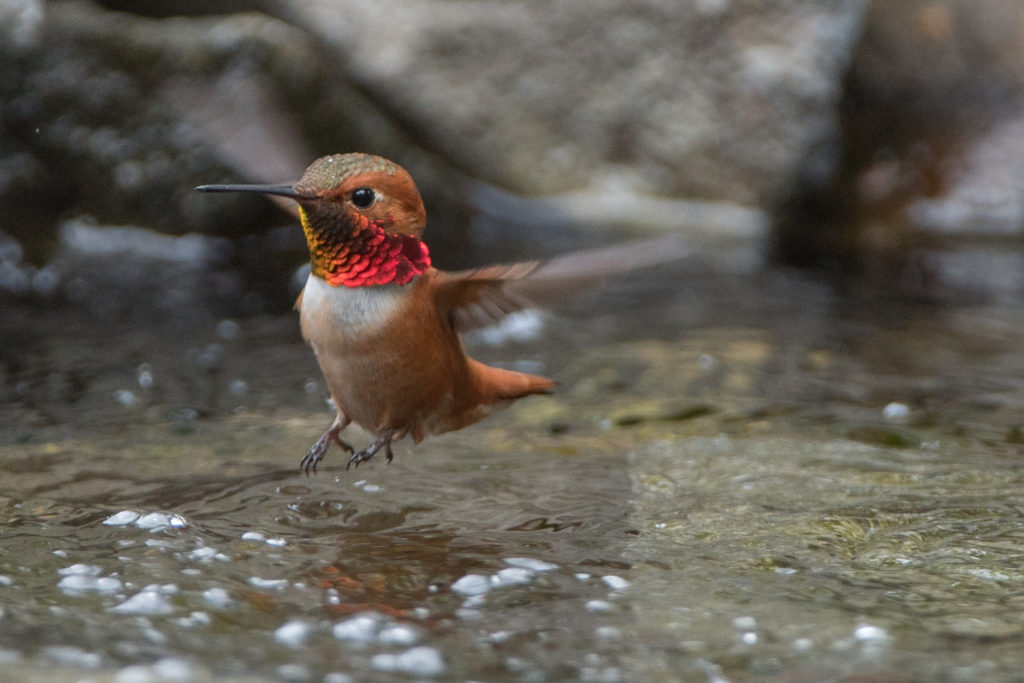
April 18, 2020, proved to be an exciting birding day even if the photography was not. Early in the morning my wife and I were surveying the yard when four Golden-crowned kinglets entered the yard and accessed our stone bird bath. I’m sure this is the largest number I have ever seen in the yard at one time.
Around mid-morning I received a call from a neighbor that there was a Pileated woodpecker, a very infrequent visitor to the neighborhood, in the wetland a few blocks (closer as the proverbial crow flies) from us. I grabbed my camera and quickly drove to the scene but the woodpecker was at the very top of a dead tree and my only viewpoint was into the sun! I took a couple of photos for a record but they aren’t “postable”. I was distracted by the woodpecker but realized that there was another bird climbing from limb to limb in a tree between us… it was a Stellar’s jay, another infrequent visitor to the neighborhood.
Since I was already out I drove back down to the Cap Sante Marina to check on the Least sandpipers. They were still there. On this occasion I had brought along my 1.7x tele-extender, giving my 200-400mm lens (300-600mm equivalency with my less than full-frame sensor on my Nikon D500) just over 1000mm equivalency… if I have an accurate understanding of the matter and have done the math correctly. As can be expected, that camera/lens configuration suffers some issues with resolution but considering the distance involved and the size of the birds, it’s the best I can do under the circumstances.
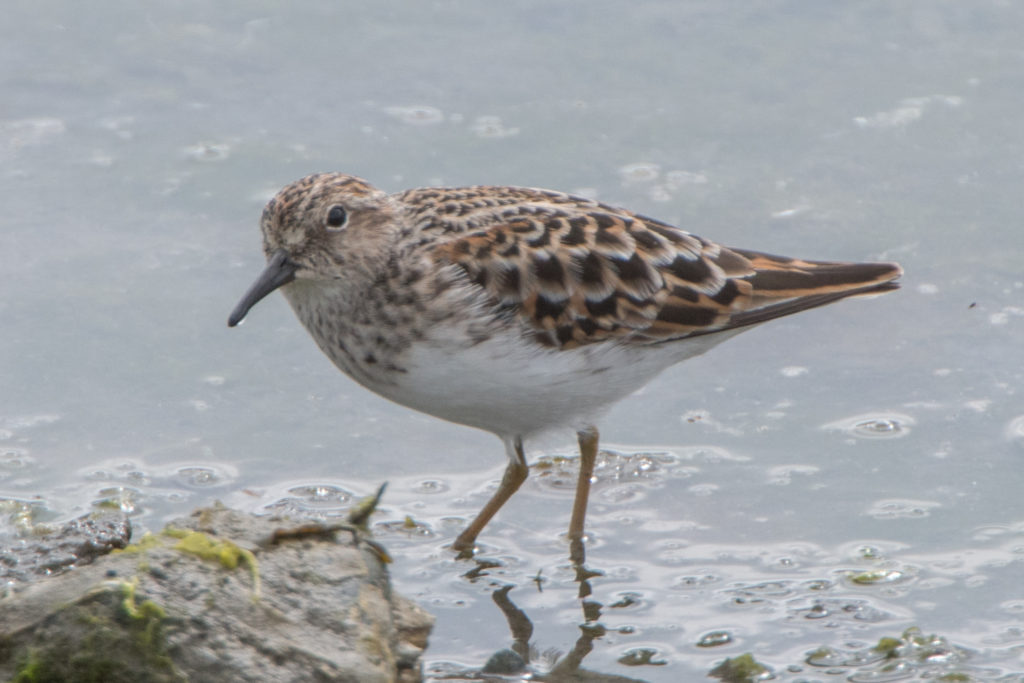
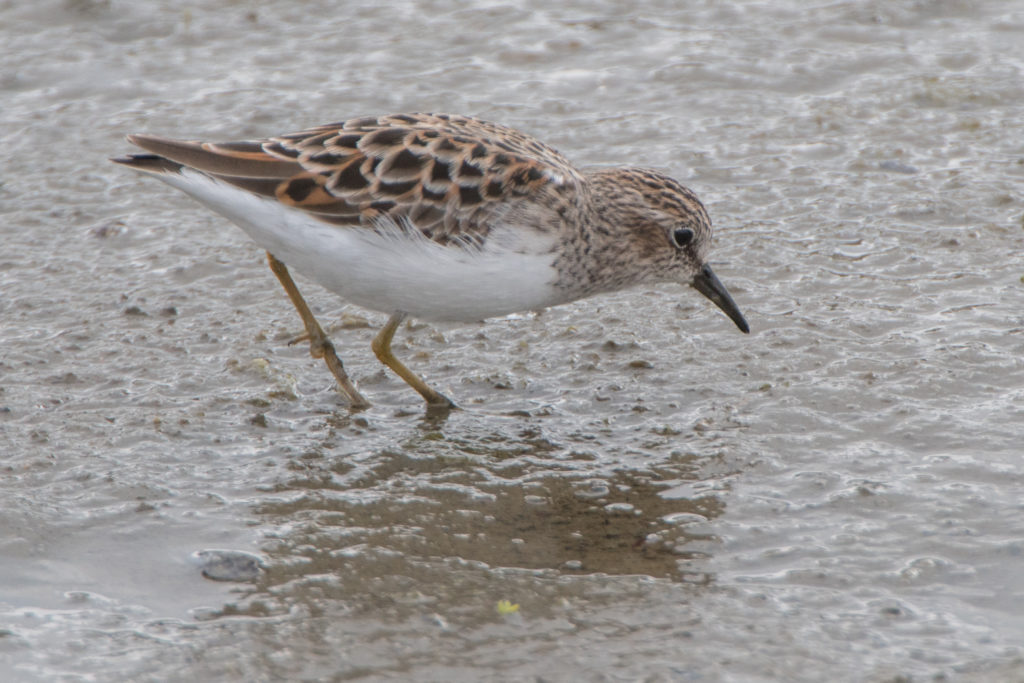
Both times when I visited the marina I photographed male House sparrows gleaning feathers for nesting materials.
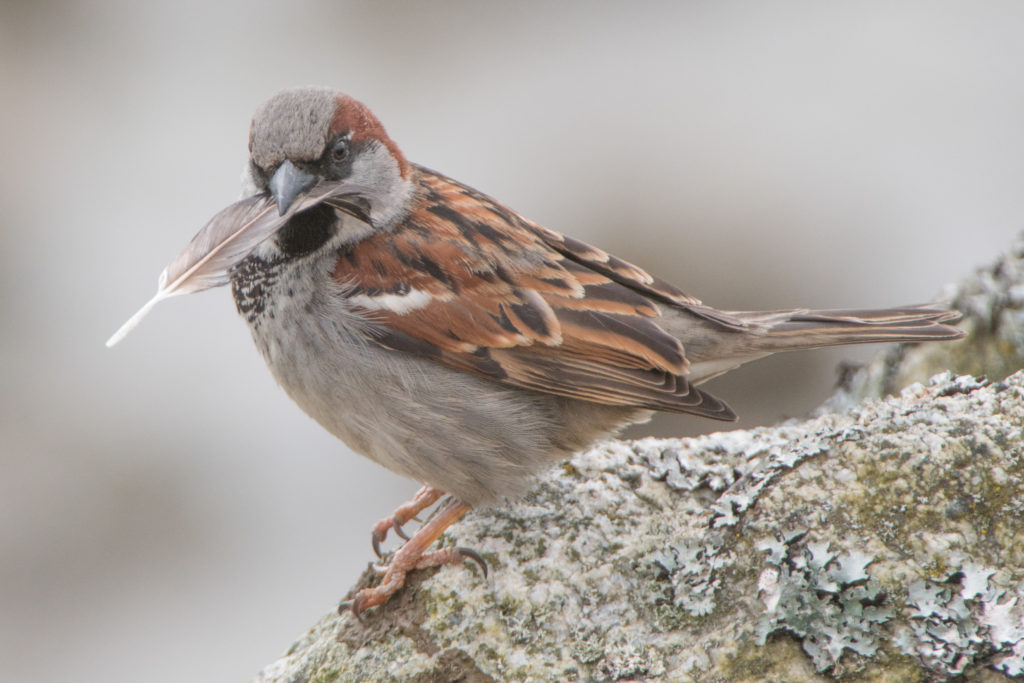
And while on the subject of House sparrows, later that day and back at the house I obtained a few photos of something I had been trying (unsuccessfully) for years to obtain… photos of a male and female House sparrow together and both in relatively good focus. House sparrows are common birds and are quite gregarious, but for most of the year I’ve found that the sexes generally don’t appear side by side. In teaching my beginning birding classes in the past I’ve had to rely on separate photos for identification of the sexes.
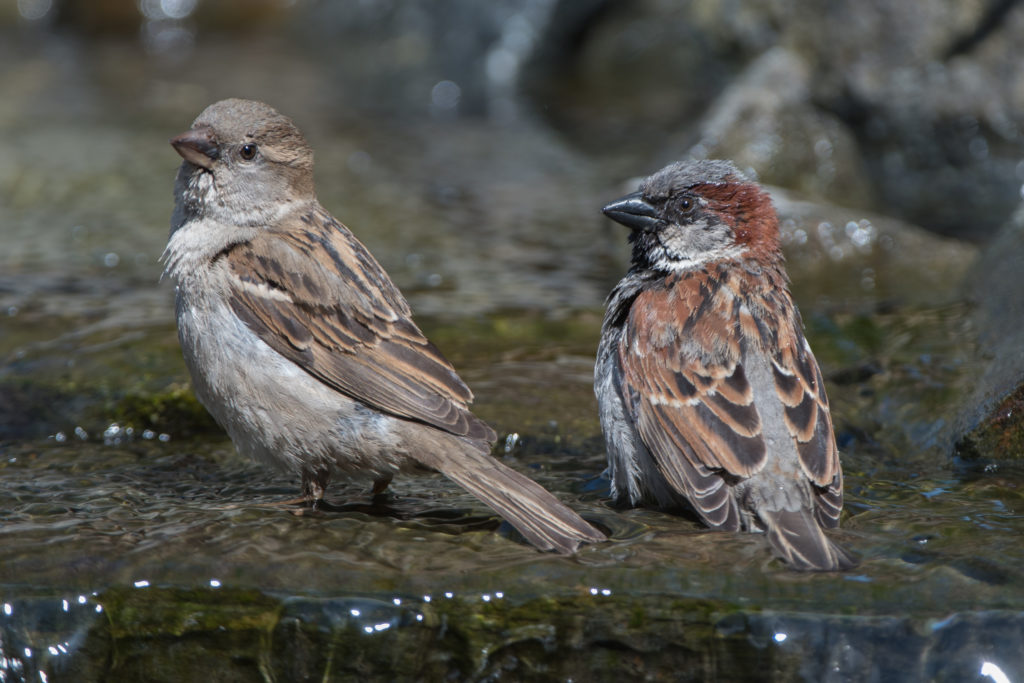
And finally, a big THANKS to the neighbors who are part of our informal bird sightings network and notify me when birds of interest appear in the neighborhood!
